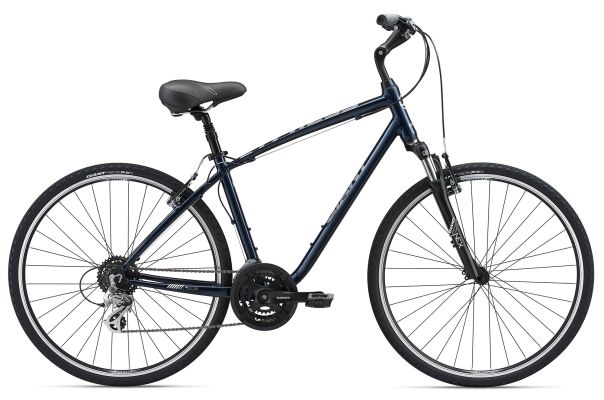We know, there’s no such thing as a stupid question. But there are definitely some questions too embarrassing to ask your local shop or riding buddies. Ask A Stupid Question is our weekly series where we get to the bottom of your questions – serious or otherwise. Hit the link at the bottom of the post to submit your own question!
This week it’s all about hybrids… er, bikes that at one point were called hybrids?
Bruno wrote in with the following question, “I’m 71 and I just bought my first bike (a hybrid) and I really enjoy riding. I can see that in a year or so I’ll want something a bit faster. I want to be able to ride 30+ miles on pavement but I also want to sit upright due to some neck issues. I can’t figure out the type of bike I should look for. The terminology varies so much that I can’t tell if I should get a urban, endurance, fitness, or other type of bike. Can you shed some light on this?”
First off, congratulations on your first bike! Just goes to show that no matter what age, it’s a good time to pick up cycling!

That is a great question, and one that could certainly be confusing. Originally, the term ‘hybrid’ was used to describe a bike that borrowed attributes from both road or touring bikes and mountain bikes. At the time, Hybrids were pretty straight forward – a mountain bike like frame with 700c wheels and narrower yet often still knobby tires, and a flat handlebar .
However, it didn’t take long for the category to splinter off into multiple sub-categories which still went by the name ‘hybrid’. Now you can often find similar bikes labeled as ‘hybrid’, ‘comfort’, ‘urban’, ‘Sport’, ‘fitness’, or even ‘commuter’. In fact, if you go to one of the biggest brand’s website and click on hybrid, it brings up more than 60 bikes with everything from flat bars to drop bars, 26, 27.5, and 700c/29″ wheels, suspension equipped, and fully rigid.
Likewise, it’s difficult to offer advice without knowing exactly what you’re currently riding, but there are some basic guidelines. More than likely, if you think you’re on a hybrid, you’re on a bike with a suspension fork, wider tires, and flat bars and shifters.
Since you mention neck issues and the desire for an upright ride, I’d suggest sticking to the flat bar family meaning the handlebar is flat and it uses mountain bike style trigger or grip shifting. You’ll generally find more upright bikes in this category, many with the option of adjusting the handlebar position to make it more upright if needed.
Starting with the wheels and tires, generally the bigger the wheels are, the easier it will be to maintain speed on the road or trail. So if you’re riding 26″ wheels, going to 700c/29″ (they’re the same wheel size so used interchangeably) will feel faster. Similarly, narrower tires to a point will feel faster. You don’t want to go to extremes since a wider tire will provide more comfort, but if you’re currently riding a mountain bike or knobby hybrid tire, going to a smoother, narrower, and lighter tire will again make a big difference.
Also, if your bike has suspension, a bike built without it will generally up the speeds again. They’re lighter and usually more energy efficient without the often heavy fork up front.

Most likely, if you go into any bike shop and say you’re interested in something like a “fitness hybrid” or “fitness bike” the staff should usually steer you in the right direction. From what you’ve described, it sounds like this could be the right answer and will generally be much lighter and more efficient than the run of the mill comfort hybrid.
Enjoy the ride!
Got a question of your own? Click here to use the AASQ form, or find the link under the Contact menu header up top anytime a question pops into your mind!
